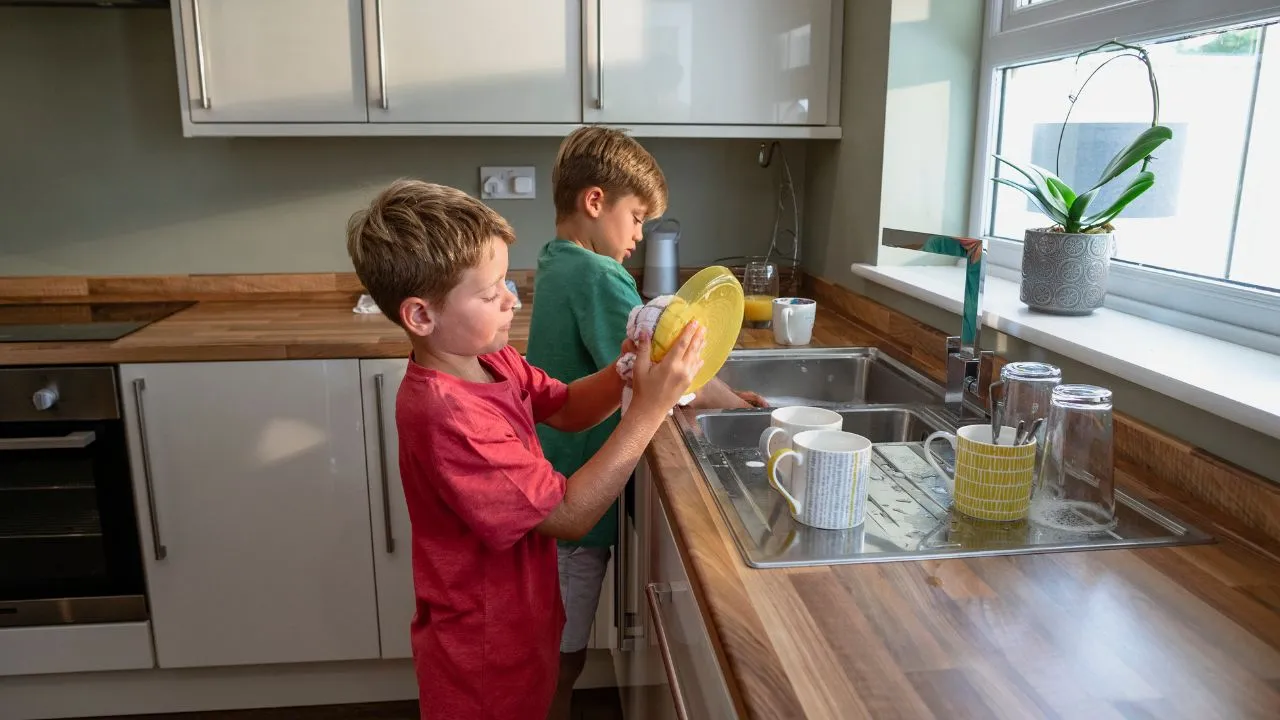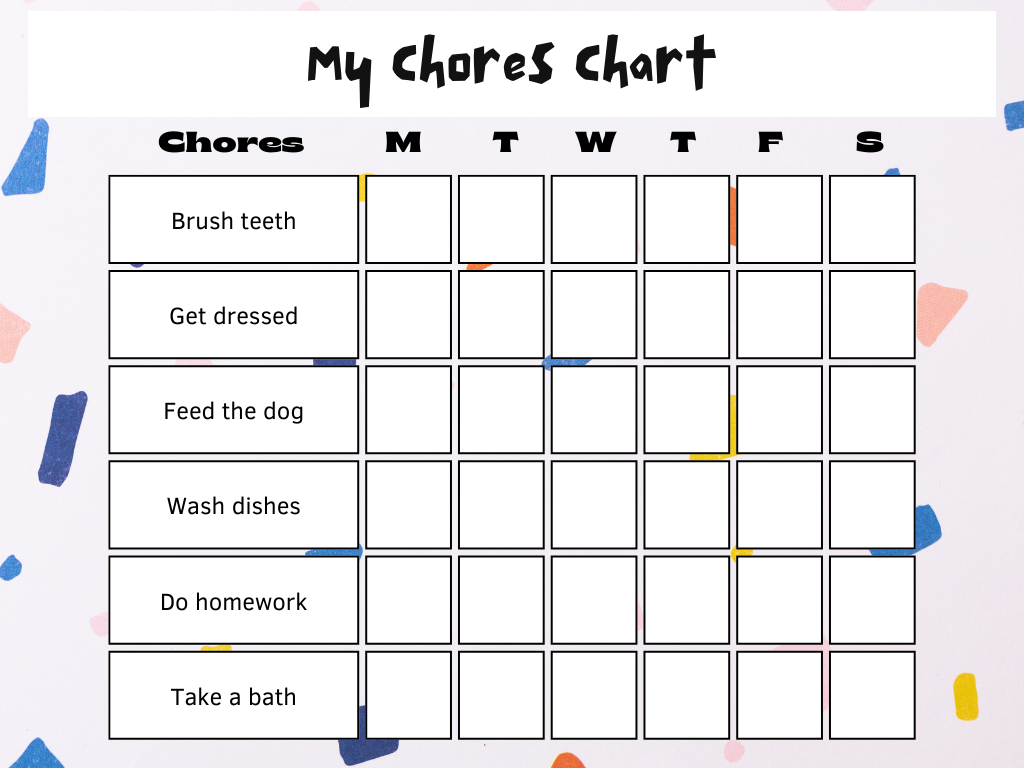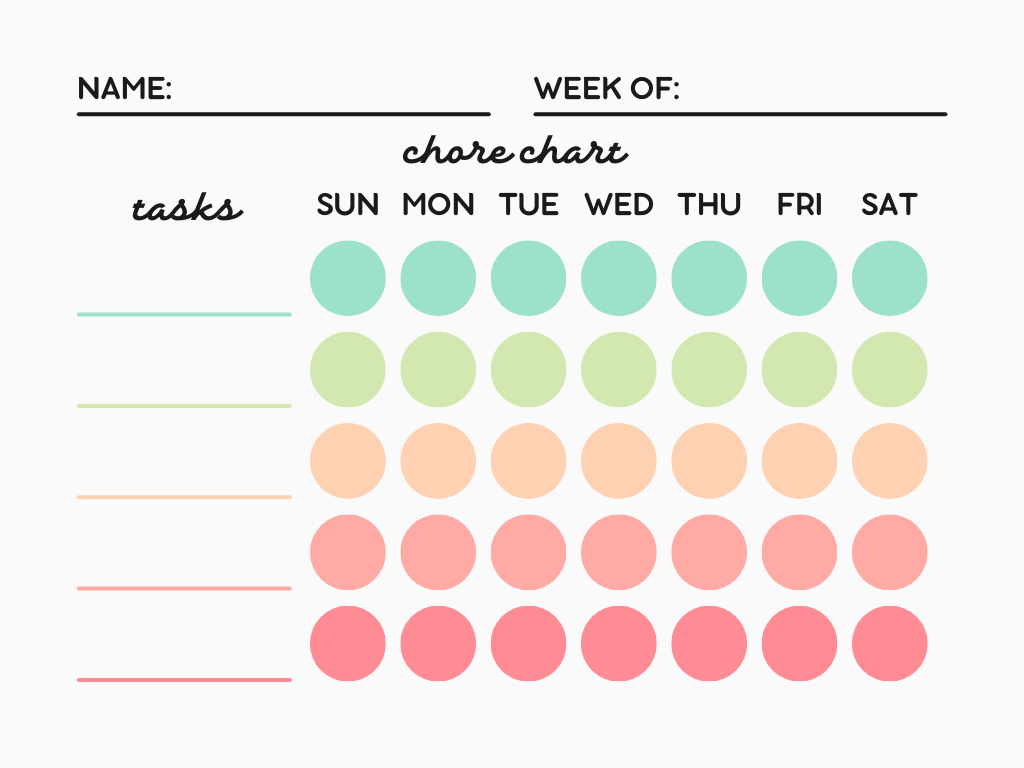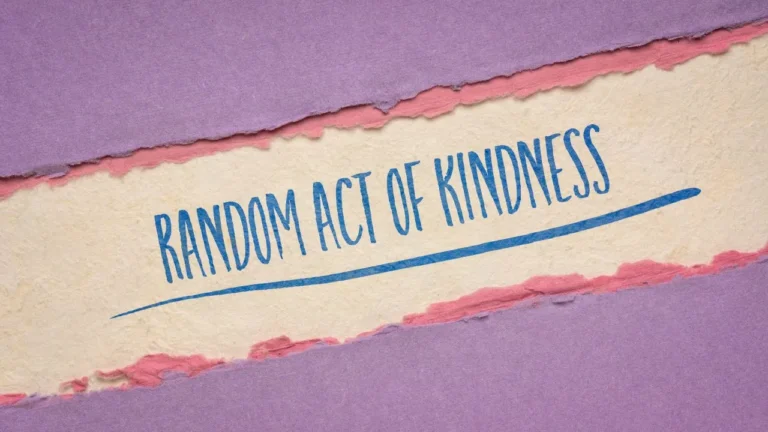Family Chore Charts: Making Household Tasks Work for Everyone!

Chores are often seen as a necessary evil, a set of tasks that no one wants to do but must be done for the sake of a clean and organized home. But what if we could change that narrative? What if chores became a way to foster family unity and teach essential life skills?
This comprehensive guide aims to do just that. We’ll delve into printable family chore charts, age-appropriate chores, and even the psychology behind why chores can be a good thing. So, buckle up and read on, because this is not your average chore list article.
The Importance of a Family Chore Chart
A family chore chart is more than just a list of tasks to be done around the house. It’s a tool for teaching responsibility, teamwork, and even basic life skills. When everyone in the family has a role to play in maintaining the home, it creates a sense of unity and shared responsibility.
Moreover, a well-structured chore chart will help ensure that the workload is fairly distributed, making it easier to keep the house clean while also making your children accountable for their actions.
Breaking Down Chores: Daily, Weekly, and Monthly Tasks
Understanding the frequency of chores is crucial for effective planning. Daily chores might include tasks like making your bed or putting away dishes. Weekly chores could involve mowing the lawn or vacuuming, while monthly chores might include deep cleaning the bathroom or organizing the garage. Breaking down chores by frequency ensures that nothing is overlooked and helps in creating a more organized chore schedule.
Creating Your Own Printable Family Chore Chart
In today’s digital age, creating a printable family chore chart has never been easier. Numerous free printable family chore chart templates are available online. These templates are often customizable, allowing you to tailor them to your family’s specific needs. A spreadsheet can be an excellent tool for this, enabling you to easily track who is responsible for what and when tasks are completed.
Age-Appropriate Chores: What’s Suitable for Your Kids?
Assigning age-appropriate chores is crucial for ensuring that tasks are completed effectively and safely. For younger kids, simple tasks like putting away toys or helping to set the table can be appropriate. As children get older, they can take on more complex chores like doing a load of laundry or scrubbing the bathroom. The key is to assign tasks that are both challenging and achievable, fostering a sense of accomplishment and responsibility.
Innovative Chore Chart Ideas: Making Chores Fun
Chores don’t have to be a drag. They can be quite enjoyable if you get a little creative. How about turning chore time into a game? The person who completes their chores the fastest could get to choose the family movie for the night. Or perhaps you could create a point system, where each chore is worth a certain number of points, and those points can be redeemed for small rewards.
The Bathroom Conundrum: A Detailed Chore Checklist
The bathroom is often the room that requires the most frequent and detailed cleaning. A comprehensive chore checklist for the bathroom could include tasks like scrubbing the toilet, wiping down all surfaces, and cleaning the shower or bathtub.
These tasks should be done at least once a week to maintain a clean and hygienic space. Don’t forget about less frequent tasks like cleaning the exhaust fan or washing the shower curtain, which could be done every month.
The Fine Line Between Housework and Deep Cleaning
Housework generally refers to the regular maintenance tasks that keep your home functional and presentable, like sweeping, dusting, and doing the dishes. Deep cleaning, on the other hand, involves more intensive tasks like washing the windows, shampooing the carpets, or cleaning out the refrigerator. Understanding this distinction can help you better allocate tasks and ensure that your home is not just surface-level clean, but also deeply sanitized.


Customizable Chore Charts: Adapt as You Go
Life is ever-changing, and your chore chart should be able to adapt accordingly. Whether it’s a new school year, a change in work schedules, or even the addition of a new family member (like a pet), your chore chart should be flexible enough to accommodate these changes. Make sure your chore chart is editable, so you can easily update it as needed.
A Few of Our Favorites:
Making Chores a Family Activity: Teamwork Makes the Dream Work
Chores shouldn’t be a solitary activity. They offer a great opportunity for family bonding. Whether it’s pairing up to tackle the weekly grocery shopping or turning up some music for a family cleaning spree, chores can be a lot more fun when done together. Plus, it’s a great way to model teamwork and cooperation for your kids.
The Psychological Benefits of Chores: More Than Just a Clean House
Beyond the obvious benefit of a cleaner home, household chores offer psychological benefits as well. They help instill a strong work ethic, teach responsibility, and can even improve self-esteem. When children complete their chores, they develop a sense of competence and gain valuable skills that will serve them well throughout life.
Key Takeaways
Detailed Household Chore List
- Grocery Shopping and Meal Prep
– This chore involves making a shopping list, going to the grocery store, and preparing meals. It’s a great way for older kids to learn about budgeting, nutrition, and cooking skills. Plus, it’s an excellent opportunity for family bonding if done together.
2. Outdoor Maintenance
– Whether it’s mowing the lawn, raking leaves, or shoveling snow, outdoor chores offer a chance for physical activity and fresh air. These tasks are generally suitable for teenagers and can be rotated among family members to share the workload.
3. Pet Care
– From walking the dog to cleaning the fish tank, pet care chores teach responsibility and empathy. These tasks can be suitable for children of various ages and can be rotated to ensure everyone gets a turn.
4. Seasonal Deep Cleaning
– This involves tasks like washing windows, cleaning out gutters, or even reorganizing storage spaces. These chores are more labor-intensive and are best suited for older kids and adults. They offer a chance to work together as a family and achieve a greater sense of accomplishment.
5. Gardening and Plant Care
– Whether you have a full garden or just a few houseplants, caring for them can be a rewarding chore. This task is suitable for all family members.






